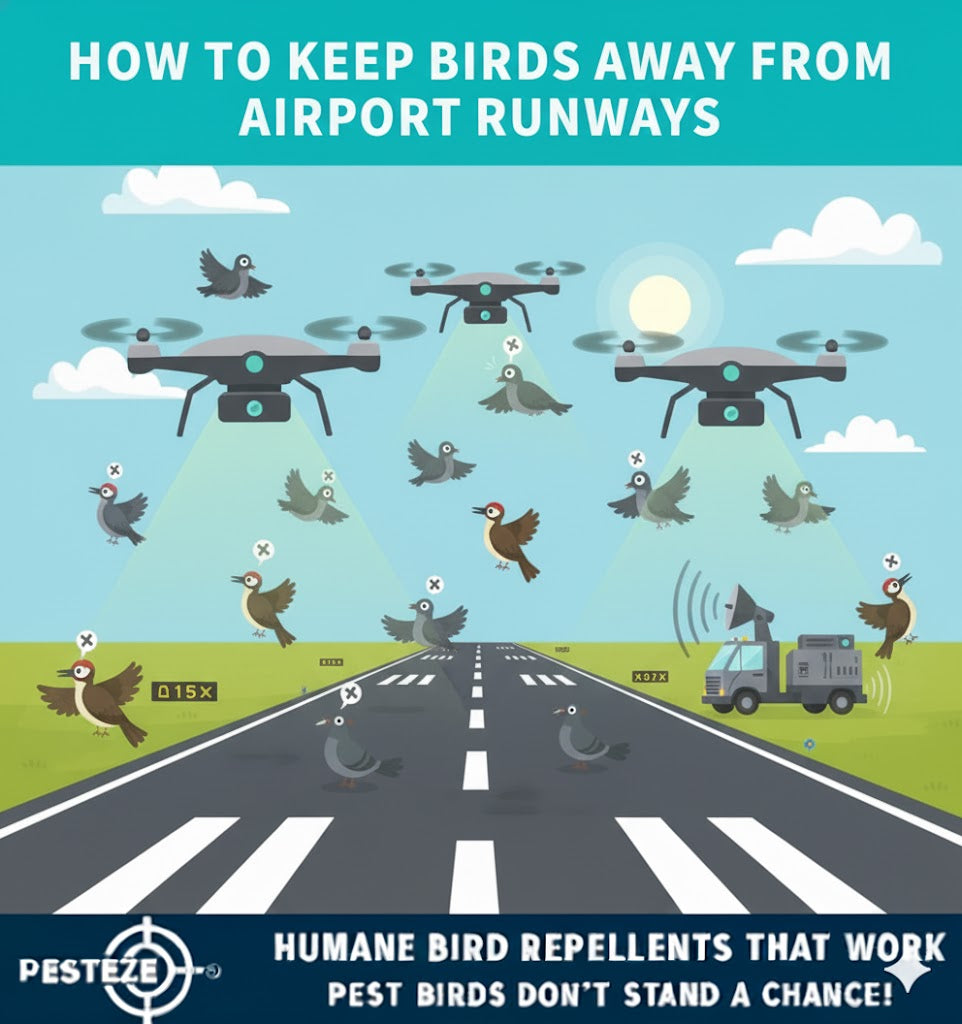HOW TO KEEP BIRDS AWAY FROM AIRPORT RUNWAYS

HOW TO KEEP BIRDS AWAY FROM AIRPORT RUNWAYS
SUMMARY
Birds on airport runways pose serious safety risks, including bird strikes that can damage aircraft and endanger passengers. Using a combination of humane deterrents, habitat management, and monitoring systems helps airports maintain safe, bird-free zones.
FEATURES
Safety-Focused: Reduces the risk of bird strikes and accidents.
Humane Solutions: Deters birds without harming wildlife.
Wide Coverage: Protects large runway areas and surrounding fields.
Cost-Effective: Prevents costly aircraft damage and operational delays.
Integrated Systems: Works with visual, auditory, and technological deterrents.
Eco-Friendly: Avoids poisons or harmful chemicals.
Customizable Methods: Tailor deterrents to local bird species and airport layout.
Continuous Monitoring: Ensures deterrents remain effective long-term.
GUIDE DESCRIPTION
Birds near airport runways present a major hazard, with bird strikes capable of causing severe damage to aircraft. Maintaining a bird-free runway requires a multi-layered, humane approach that discourages birds from entering the area while preserving local wildlife.
Habitat management is the first step. Reduce attractants by managing grass height, removing standing water, and securing trash bins. Open fields, ponds, and landfills near airports can draw birds, so modifying these habitats helps prevent congregation.
Visual deterrents such as reflective tape, scare balloons, and predator decoys like hawks or falcons create movement and shadows that birds associate with danger. Rotate and move visual deterrents regularly to prevent birds from becoming habituated.
Auditory deterrents, including distress calls, predator sounds, or motion-activated noise devices, can further discourage birds. These should be used strategically to avoid excessive noise pollution while maintaining effectiveness.
Technological solutions, such as radar bird detection and drones, allow airports to monitor bird activity in real-time. Drones create movement and sound, discouraging birds from approaching critical areas, while radar systems alert staff to bird presence for immediate intervention.
Exclusion methods, including nets, fencing, or wires around nearby structures, limit perching and nesting. Preventing birds from establishing roosts near runways reduces long-term hazards.
Regular monitoring and maintenance ensure deterrents remain effective. Inspect runway areas, deterrents, and surrounding habitats consistently, adjusting strategies as bird patterns or seasons change.
By combining habitat management, visual and auditory deterrents, technological monitoring, and exclusion methods, airports can maintain safe, bird-free runways. This integrated approach protects aircraft, passengers, and wildlife simultaneously.
- Smrithi Art


Comments 0